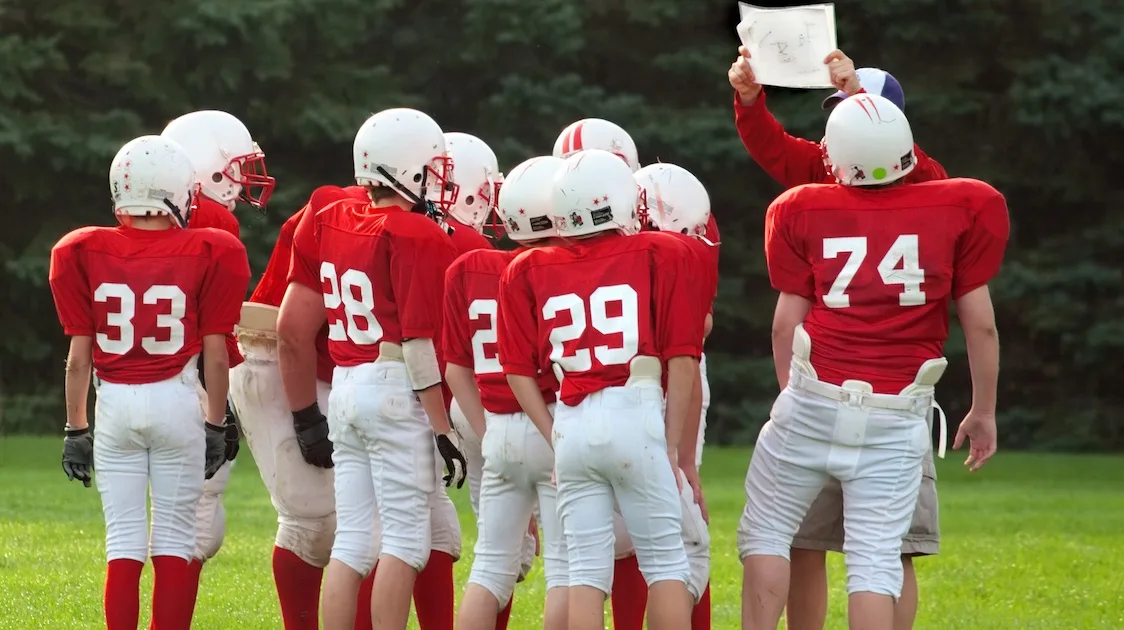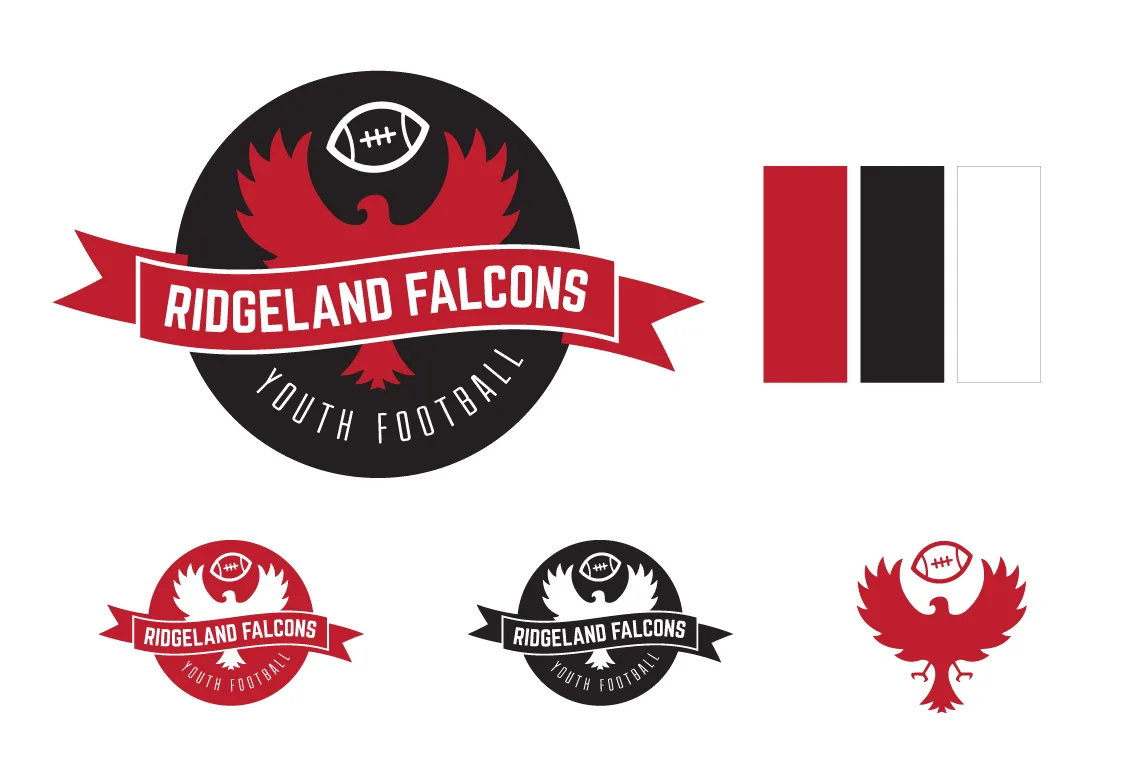How to Start a Youth Football Team - 8 Steps to Kickoff Your Season
Tim Gusweiler Last updated: September 20, 2024


Are you looking to provide more opportunities for flag and tackle football in your community?
If you're not sure how to start a youth football team, we have a few steps below to help generate interest, register players, and schedule games.
Starting a new team can seem difficult, but follow these steps below and you'll kickoff your first season before you know it. Need more pro tips? Check out our complete guide for football team management!

Step 1 - Recruit Coaches & Volunteers
No successful football program is completely led by one individual. It takes a team to build long-term success and there are a wide range of costs to start a football youth team. You need to start by surrounding yourself with other volunteers and coaches to help you start the program.
Try to find about 5 other people that are willing to help you get the football team off the ground. Each person can have different skills that they can help contribute in your first season.
For example, a few of your team members should have coached before. They don't need to have a ton of years of coaching experience, but they should have at least coached football at some level in the past.
You should also find a few volunteers that aren't interested in coaching, but want to help the football team with fundraising, marketing, and administration. These volunteers will be critical to helping to grow your organization.

Your coaching staff and volunteers will make a huge impact in your first season.
Ideally, you should try to get support for your team from local high school coaches. This will help build credibility for your new organization and help you recruit players to the team.
Once you've found some initial volunteers and coaches, you can start to promote the organization and generate interest.
Step 2 - Name Your Team and Build Your Brand
Naming Your Football Team
You might want to affiliate your team directly with the local high school program. If that's the case, you can use the local high school mascot and just include "Youth", "Junior", or "Little" in your organization's name.
Or, if your program won't be directly affiliated with a high school you can come up with your own name. Try to involve at least several volunteers in creating the organization's name. Generally you should try to include the community or region that your organization is located in the name of the organization.
As you begin to promote your teams it's best to have a unique organization name. For example, you want to avoid making the name too simple like "Falcons Youth Football". Instead, include the region you're located like "Ridgeland Falcons Youth Football".
You should also Google your ideas for the name of the organization before making a final decision. This will help identify if there are other youth sports organizations that already exist that have the same name.
Create a Logo
Creating your new logo is one of the most fun steps in starting a new youth football team. Getting a high quality logo for your football teams is actually a pretty simple process - and there are a few options to get started.
You might be able to find a local graphic designer to create a logo for your team - either for free or at a discounted rate. Ask the new volunteers and coaches at your organization if they know of any friends or family with design skills that might be willing to help out your new organization.
If there's not a local designer that can help you out, you can also get high quality logos by posting to a website like Freelancer.com. In most cases, you should be able to get a logo for around $100 or so.
There are a few key things to keep in mind when creating a new logo:
- Your logo should have a few different color variations and a black & white version. Having a few different variations will help with your website, uniforms, and other marketing materials in the future.
- You should have a large version of your logo with the full name of your organization, and also a smaller version with no text or just the abbreviated name of your team. This will give you a few different logo options to use on social media, helmets, and apparel.

It's important to have a few different versions of your logo - they'll come in handy!
Set Up Social Media Channels
Setting up social media channels is a great way to start promoting your organization. You should assign one volunteer to be in charge of all of your social media channels. They should post several times per week to each channel, and read and respond to any comments.
The two most important social media channels we recommend for youth football programs are Facebook and Instagram.
A Facebook page will help you promote your organization to your entire community - parents, local businesses, and potential volunteers. An active Facebook presence is also helpful to get your organization listed in Google Search Results. Instagram will be a great place to share photos and short videos during your season.

You can always create more social media pages in the future (like YouTube, Twitter, TikTok, etc.) but starting with Facebook and Instagram will get you off on the right foot!
Never started a social media channel for a sports team? We have some tips on the Best Practices to Manage Social Media for a Sports Organization.
Step 3 - Build Your Football Team's Website
Once you have a logo and social media set up, you should create a website for your football team. A website will be the online hub for everything about your organization - like coaching profiles, player registration, team rosters & schedules, sponsorship information, background checks, videos, and more!

You should start by finding a website builder that's made for sports. Important features that can help you run your football program should be built-in so you don't have to do any heavy lifting.
You'll also want to make sure your website has a unique domain name so that it's easy to list on your social media accounts, flyers, and any other promotional information.
VIDEO - Build a Website for Youth Football
Never built a website? Watch our quick video!
Step 4 - Schedule Camps & Clinics
Small camps & clinics can be a great way to start promoting your organization in your community.
You can schedule these events in the offseason to give parents the opportunity to learn more about your new organization. If their kids have never played football before, clinics can be a great way for them to get their feet wet without committing to an entire season.
Try to charge a low fee (like $10) to help fund a one-day clinic. Or, if you're able to find a sponsor for the event you could make the event free for kids in the community.
Make sure to use your social media pages to promote all of your events, and allow parents to register online.
Step 5 - Join a League for Your First Season
You'll most likely need to find a league for your teams to play in. The easiest way to join a league is just by searching Google in your area for pre-existing leagues. You can also network in neighboring communities to find other teams to play against.
National sites like USA Football and NFL Flag can help you find other organizations in your area to schedule games.
Step 6 - Register Players for Your Season
Registering players and managing payments can be one of the most difficult parts of running a sports organization. You should start registration at least 6 months before your season starts in order to register as many players as possible.
Here are a few steps to remember when you're starting registration...
Include Key Questions in Your Form
You should include a variety of questions in your form, including:
- Player's first and last name
- Parent's contact information
- Player's uniform sizing
- Player's Age and Grade Level (if applicable)
- Other details that are important about the player (like school, experience playing football, age verification, etc.)
- Volunteer opportunities for parents
- Online waiver acknowledgement such as a Code of Conduct
Register Players Online Through Your Website
You should register all of your players through your website. Registering players online removes any paperwork, prevents you from having to deal with cash and check, and makes the registration experience much easier for players and parents.
You can also manage all of your registration data (like player names, birth dates, uniform sizes, etc.) all within an online system.
Online registration creates a convenient experience for parents, and saves you tons of time as an administrator.
Collect Donations During Registration
Many parents will be willing to go above and beyond to support your football program, especially in your first season. At the end of registration you should give them the option to make a donation.
Any donation amount can go a long way. Make sure to write a quick paragraph to help parents understand why donations are important, and how donations will be used. Even if a small percentage of participants make a donation during registration you'll be able to raise funds to help cover some operating expenses and fund some player scholarships.

VIDEO - Register More Youth Football Players
We've got a few quick tips to register as many football players as possible.
Step 7 - Fundraising and Finding Sponsors
As you get your football program started it's important that you actively fundraise. Finding local sponsorships and running successful fundraisers can make a big difference when you manage your budget in future seasons.
You should start by assigning one volunteer to be the Fundraising Chairperson for your organization. Fundraising can be a year-round task! Make sure you're spending time at each board meeting discussing your fundraising progress and generating new football fundraising ideas.
You can also create a sponsorship package to sell different levels of sponsorship and send donation letters in your offseason to local businesses. You can also post your sponsorship tiers on your football website to generate more interest.

Sponsorships and fundraising are a year-round activity for successful football programs.
Step 8 - Set Your Organization Up for Future Growth
Once you've started your first season, it's important to begin to set your teams up for future success. Start working with the other volunteers at your organization to develop a long term vision. You should start to answer some simple questions:
- What age groups do we want to support?
- Will our organization support flag football, tackle football, or both?
- Do we want to offer a cheerleading program?
- Should the program have teams in the fall only? Or in the fall and spring?
Answering questions like this can help get all of your volunteers and coaches on the same page for the long-term, and help you grow the organization in future seasons.